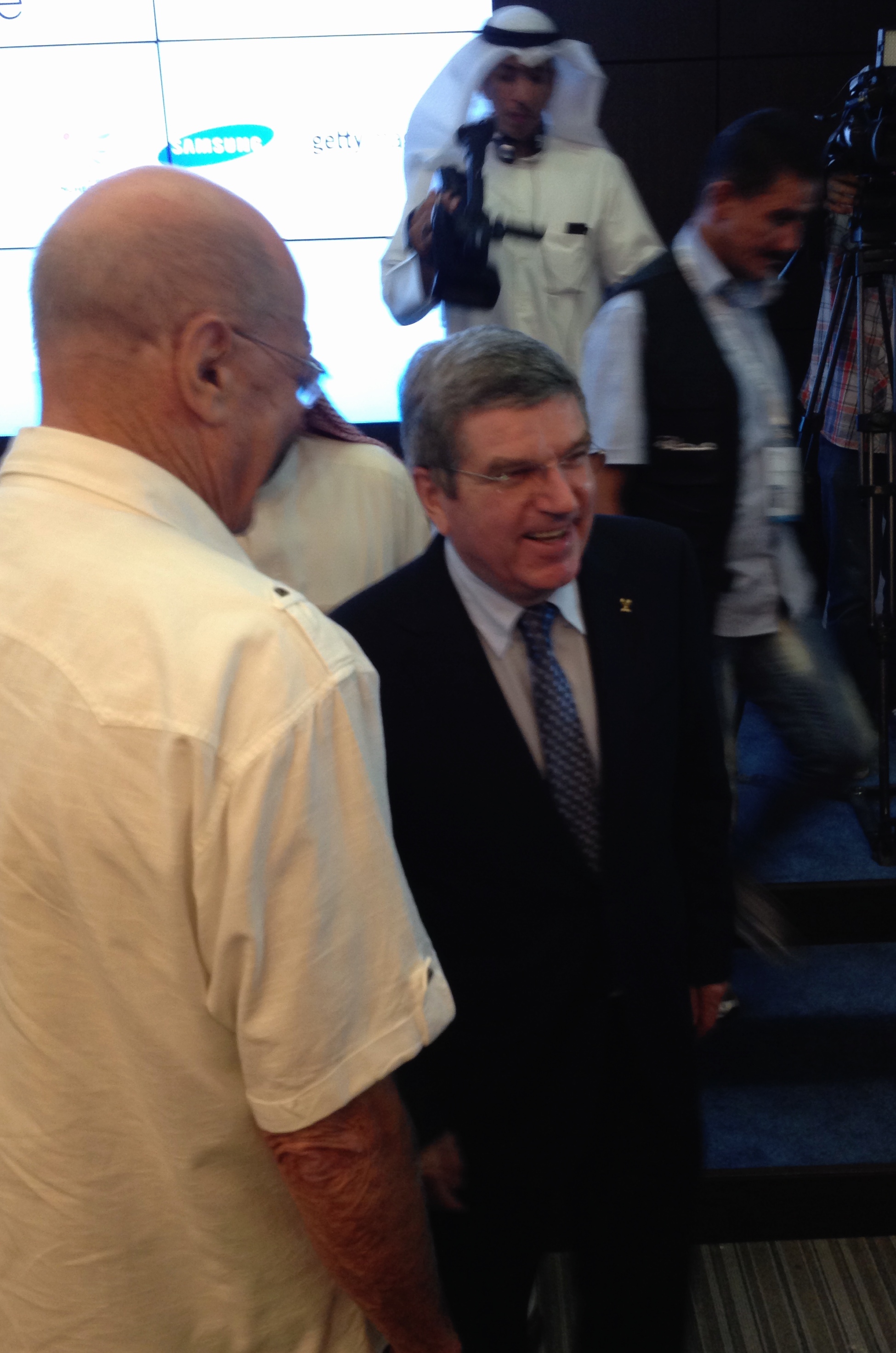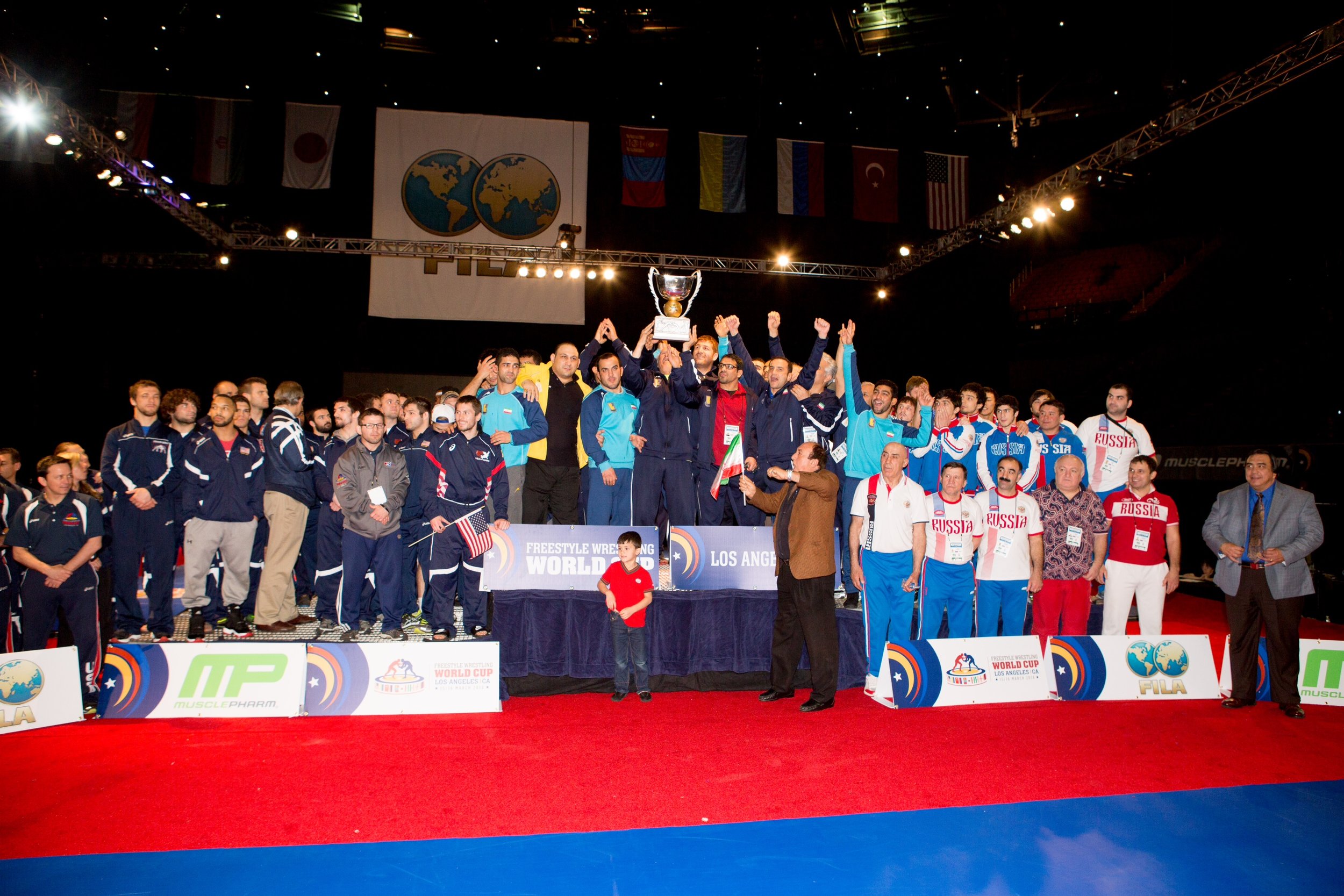A great many people are desperately afraid in this life of failure. Being afraid does only one thing. It holds you back.
Michael Phelps is not, has never been, afraid of failure. He has the courage to dream big dreams -- dreams without limits, without worries about what might happen if they don't come true.
Phelps is indisputably the greatest swimmer of all time. There can be no argument. As he steps on the blocks Thursday at the Mesa Grand Prix, having said at the London 2012 Olympics that he was done swimming competitively but now having changed his mind, the natural question is, why, and the one that goes with it for so many is, but isn’t he afraid of damaging his reputation?
The second one first: no.
For Michael Phelps, this is absolutely opportunity, and nothing but.
This is, in plain speech, what sets greatness apart.
Maybe Phelps won’t win every race between now and the close of the 2016 Rio Games.
Strike that. It’s guaranteed that he won’t, starting with the series this weekend in Arizona.
So what?
It does not matter.
For Phelps, what matters is the opportunity to test himself, to see how good he can be.
As he said Wednesday at a news conference, “I’m doing this for me," adding a moment later, "I am looking forward to wherever this road takes me."
Phelps has never — again, never ever never — said, “I want to win x medals.”
He has always said his goals are to grow the sport of swimming and to be the very best he can be.
His impact is broad and deep:
-- The caliber of athletes in the sport is so much better. Guys coming into college are now swimming the 200 freestyle roughly two seconds faster than they did even just a few years ago. Why? Because they watched Phelps swim, whether in 2004 in Athens or 2008 in Beijing, and said to their parents, that guy is awesome and I want to be like that.
-- The U.S. team has its leader back. As great as Missy Franklin or Katie Ledecky are, and they are, and as fantastic an athlete as Ryan Lochte is, and he is, Phelps is incomparable. He makes everyone better.
Why?
This is a guy who loves to race. He loves to win. He hates to lose.
So why, after proving without a shadow of a doubt — 22 Olympic medals, 18 of them gold — is he back once more to see how good he can be?
Wrong question.
It’s not why,
It’s why not?
Phelps is 28. He turns 29 in July.
When he was in his early teens, just getting started with his coach and mentor Bob Bowman, Phelps would do what Bowman told him to do because, well, Bowman told him to do it. In Athens in 2004, when he won eight medals, six gold, same. In 2008 in Beijing, when they hatched the plan that led to the eight-for-eight gold, same.
By the 2011 world championships in Shanghai, that didn’t work so much anymore. Phelps had already achieved the unthinkable in Beijing; in Shanghai, he acknowledged he needed to find motivation.
In short, that’s what Phelps said by the end of the Games in London; he didn’t have the same motivation.
Though elemental, this is essential to understand: swimming is hard work, arguably the hardest Olympic sport there is, because it is often decided by hundredths of a second and it reveals, truly reveals, whether you have put in the work. That’s what Phelps learned in Shanghai. He hadn’t done the work and at that meet Lochte owned him.
By London, Phelps had done the work in every race but -- as the results emphatically showed -- the 400 individual medley. Indeed, that race proves the point. Phelps swam it because he wanted the test, caring not at all about the prospect of "failure," if fourth place at the Olympics is "failure." The instant know-it-all critics who started braying that Phelps might be done? It was his first final of the Games and, as he said immediately afterward, "It was just a crappy race." He would go on to win six medals.
After London? Time to take time off.
Now?
The intense competitive drive that makes Phelps who he is has not gone away. It never did. As if. Phelps has a lot of guys who want to hang out with him. That doesn’t fill him up. That might be good for a weekend, or a week.
Golf? For fun — sure. As an everyday thing? Come on.
Let’s get one thing perfectly straight, and for all time: Phelps is super-smart and, for that matter, multitasks as well as any CEO. He is not, nearing 29, going to go to college; when he was training in Michigan before the 2008 Games, he was not working toward a four-year degree (though he is a big Maize and Blue fan).
Swimming, from the time he was little, not only provided Phelps with structure. Fundamentally, it gave him purpose.
Again —for Phelps, swimming was the ultimate provider of structure in his world. Then and now, it provides him a base of friends. Too, it offers a coach and staff with guidance.
The realization Phelps doubtlessly has arrived at now, in 2014, is that he isn’t coming to Bowman and the North Baltimore Aquatic Club because he has to.
He wants to.
That makes all the difference.
Phelps said Wednesday he weighed 187 pounds in 2012 in London. Afterward, he allowed himself to get to 225. Now he's at 194.
Bowman has assembled at the club a world-class roster that includes the likes of French sprinter Yannick Agnel; American sprinter Conor Dwyer; Tunisian long-distance ace Ous Mellouli; and more.
If you know Phelps, however, you know that for him now training has to be more fun than less. And for him the person who most often makes training fun is Allison Schmitt, who is, among other things, the London 2012 women’s 200-meter gold medalist.
Schmitt, who moved to Baltimore last year after finishing up at the University of Georgia, is making something of a comeback herself. She had a crummy nationals and — to everyone’s shock — missed making the U.S. team that swam at the 2013 world championships in Barcelona.
Phelps and Schmitt have always had something of a brother-sister relationship. They make each other laugh. He’s good for her. She’s good for him.
"I can't say it enough," he said Wednesday. "I am having fun."
As for those 2013 worlds — it was there, in Barcelona, that it became evident to everyone who knows swimming that Phelps would be back.
The only question was when.
The U.S. men’s 4x100 freestyle relay team lost to the French — with Agnel. Having Phelps sure would have helped. He was in the stands that day, texting Bowman, the U.S. men’s 2013 coach, critiques of the race. Phelps takes enormous pride in team and country, and he wants the American men to own that relay.
Phelps also surely would have noticed that Chad le Clos of South Africa won the 100-meter butterfly in 51.08 seconds, the 200 fly in 1:54.32. When he has put in the work, Phelps swims faster than those times.
Le Clos isn’t swimming in Arizona — though there are, in total, 27 Olympic medalists from seven countries who between them have 97 medals, 51 gold, registered to swim in Mesa.
Lochte — and it must be acknowledged he is an extraordinary talent, with 11 Olympic medals, five gold — is on the start lists.
Giving credit where it is due, Lochte did his thing in the 400 IM in London. Phelps might well be done— as the Mesa Grand Prix proves, never say never — with that event. That said, both guys have traditionally duked it out in the 200 IM and if this weekend and for the foreseeable future Phelps swims even shorter events, so be it. He said Wednesday he would be scratching the 100 free in Mesa but would be swimming the 100 fly -- hardly a surprise.
But Phelps knows one other thing, too, and Lochte knows it as well, looking ahead — way ahead — to Rio:
At the Olympic Games, the 200 IM traditionally comes just minutes, literally minutes, after the 200 backstroke. Lochte swims the 200 back. Phelps does not. The 200 back is a killer. It leaves the legs feeling like wood. It is a testament to Lochte’s will that he even tries the double.
Always, always, always remember this about Michael Phelps:
He loves to race. He loves to win. He hates to lose.



















